Greenlaning, the driving of motorised vehicles on the approximately 6,000 miles of tracks, paths and byways with legal rights of way in England & Wales, can be understandably controversial. This article will not explore the controversy but will instead give a hopefully easy read of my own mini-adventures whilst greenlaning over the last few years.
Background
My first job abroad was in Cameroon on an iron ore project close to the Equatorial Guinean border. The journey from Yaoundé to camp was gruelling: a minimum 7-hour trip depending on road conditions, it had been known to take more than fourteen hours in the rainy season. In well-worn and bush-maintained Toyota Land Cruisers (pickups and Troopies / Troop Carriers) one would load one’s kit and supplies and set out east from the compound we rented in the city. It was my first experience of driving off tarmac.
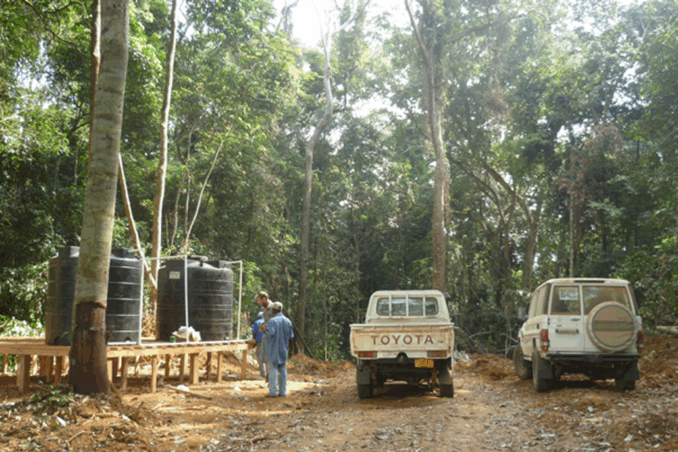
© Cromwell’s Codpiece 2025
Those early journeys quickly taught me the basics of driving on rough terrain: high/low-range; locking differentials; fast enough not to get stuck, slow enough to stay in control. It was a lesson more in what not to do than what to do. I was working with a great group of South Africans who were generous with their knowledge. On every second Sunday / shift-changeover day we would go out with the intention to get stuck and practice winch recoveries. I valued that teaching when I moved on from the project and ended up in Liberia, Guinea and elsewhere in Africa. It was also a great way to spend my 20s.
After eventually returning to England, it was a while before I realised how much I missed the rough terrain. Minus the pot-holes our roads are ordered, well maintained and subsequently very unchallenging. Using sub-contracting work as an excuse to, I bought my dream car: a Land Rover Defender. Now with a young family, I opted for a very late model (2015) 110 utility station wagon: ie: two rows of seats with plenty storage in the back.
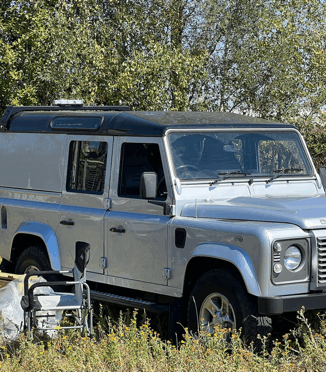
© Cromwell’s Codpiece 2025
The aftermarket for Defender accessories and parts is extraordinary and it was through a purchase on eBay I met my now-longtime ‘laning buddy, Brian. I had gone laning with a friend previously around Sherwood Forest but as he only had a Freelander, the trips we could go on were limited. Brian drives a TD5 90 which is comprehensively, if not tastefully, modified.
Peak District: a walk in the park, Kazansky
Balancing family life and work and being only an hour or so away, early trips were focussed on the Peak District. The Greenlane Association (GLASS) maintain a database of lanes but more importantly they update it regularly with the legality of each lane. We do not drive on lanes which it is illegal to be on or those with Voluntary Restraints.
Whilst many of the Peak District’s more challenging lanes have been closed over the years, there still remain some remote and exciting lanes to drive including Pindale Quarry and the Houndkirk Road, a long moorland drive. There are also a few decent lesser-visited lanes including Ladder Hill.
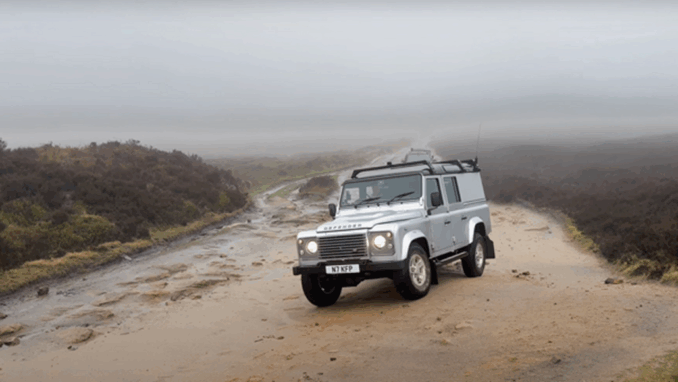
© Cromwell’s Codpiece 2025
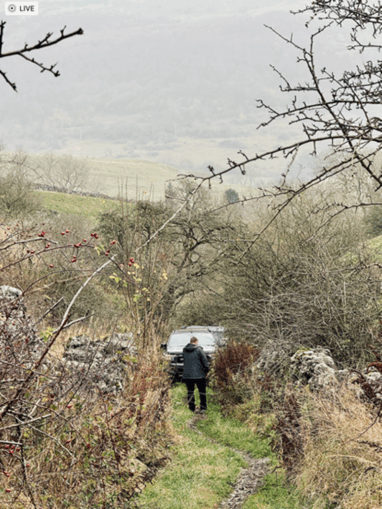
© Cromwell’s Codpiece 2025
There are some individuals and groups who greenlane ad-hoc; i.e.: they wing it on the day; they make it up as they go along. This is the polar opposite to me. Weeks before a trip I will plan a route; check recent comments against lanes to check their condition; ensure legality of the lanes; and check the proposed route against OS maps. It all has the aim of ensuring a smooth and enjoyable day out with as much time off the black stuff as possible.
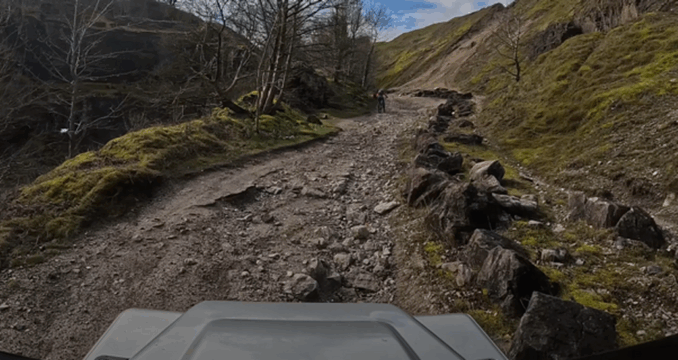
© Cromwell’s Codpiece 2025

© Cromwell’s Codpiece 2025
Yorkshire: scree and cross-axling
Yorkshire is home to some wonderful lanes including Dead Man’s Hill and Fremmington Edge. Being a little under three hours away I have only visited once but it was an excellent trip with a great group led by an ex-policeman in his ‘new’ L663 Defender. I have a trip planned for later in the year to revisit some of the more challenging lanes that I was not able to drive on the first visit.
The camp in Yorkshire was a night of particularly strong Northern Lights which was truly memorable.
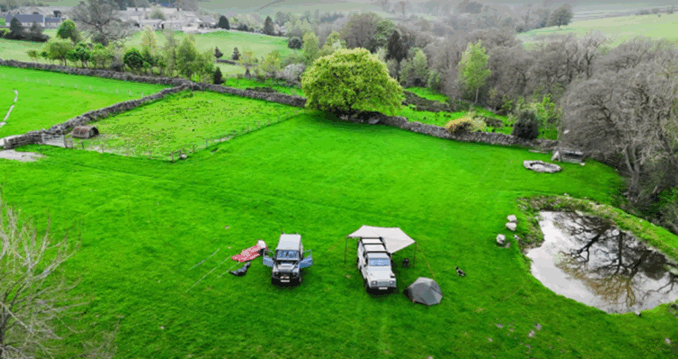
© Cromwell’s Codpiece 2025
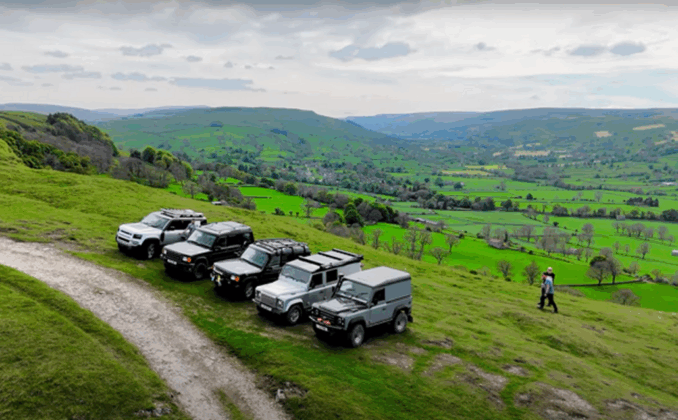
© Cromwell’s Codpiece 2025
Fremington Edge comprises a narrow tarmac approach up the Swaledale Valley side. The tarmac soon stops and the lane becomes scree and loose rocks– potentially perilous if one hasn’t properly prepared by swapping to low range and locking diffs. The angle of ascent increases until being faced with a decision in the shape of a fork in the road.
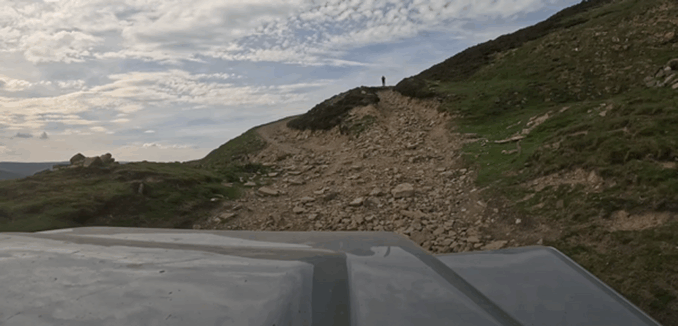
© Cromwell’s Codpiece 2025
Taking the right fork is the more challenging: two angled slabs of rock a wheelbase-length apart on opposite sides resulting in a classic cross-axle situation. The classic Defender came standard with a locking central differential which, when locked, ensures 50% of the power is mechanically transferred to each axle. That 50% of power is then split between the two tyres by the axle’s differential. As the diff is designed to ensure more power goes to the outside wheel when turning, when one wheel loses traction the diff will automatically send it more power. The result is the wheel with the least traction is sent all the power. Should this happen to opposite wheels on the rear and front (e.g.: rear left and front right) then all the engine’s power is sent to wheels with no traction.
Operation of a differential in normal driving conditions (https://uk.pinterest.com/pin/how-a-differential-works-and-types-of-differentials-on-make-a-gif–902831056522516099/)
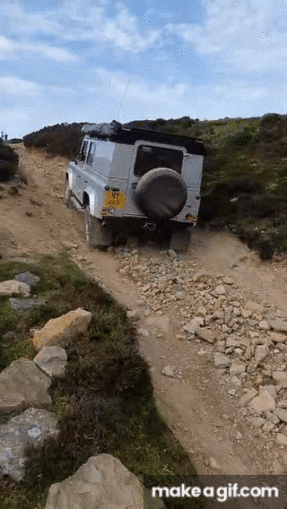
© Cromwell’s Codpiece 2025
Wales: now we’re talking
In many respects, Wales is the destination for greenlaning with infamous lanes including Strata Florida and Horseshoe Lane. The former comprises driving upstream through a river which is prone to sudden changes in depth from rainfall. The latter is colloquially called Bastard Lane.
My stock 2015 Defender has an official wading depth of 500mm. Undertaken properly, one could ford in waters deeper than this providing a sufficient bow wave is established. Extra measures can be taken to increase this wading depth by raising the engine’s air intake with the means of a ‘snorkel’; extending the vehicle’s various breather tubes; and by ensuring a water right battery box. I have not undertaken any work to increase the wading depth and thus shall not be undertaking Strata Florida.
I have, however, driven Horseshoe Lane. It is not called Bastard Lane for no reason. Approximately three miles in length, it starts with a short, sharp tarmac ascent up the flank of Ffoel-y-Ffrid before skirting the valley mid-slope through a series of forests on rough tracks with plenty of ruts, deep puddles and opportunities to cross-axle.
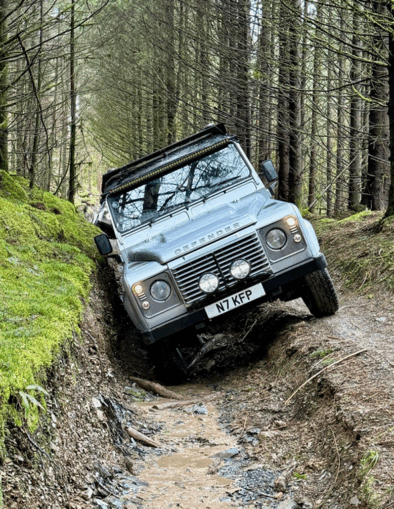
© Cromwell’s Codpiece 2025
Rock steps are aplenty. When I drove this lane it was raining and the slate was slippy, providing an extra hazard to take in to account. As always, though: slow and steady: low-range, first gear, locked diffs; use braking sparingly.
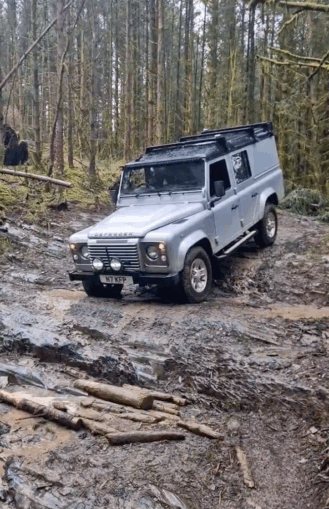
© Cromwell’s Codpiece 2025
The lane finishes with The Waterfall: a short, steep step in to a shallow brook and back out the other side. In preparation for this I had removed my tow-bar which is something that could catch on the departure. On this occasion I opted for the chicken run / easier lane. There is a much steeper step which, whilst more fun, is more suited to vehicles with shorter wheel bases. Whichever route one takes, it is necessary to crane one’s neck down and peer upwards to see the route, such is the steepness of departure.
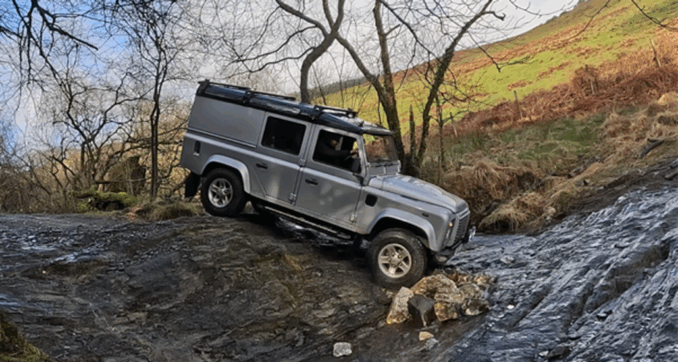
© Cromwell’s Codpiece 2025
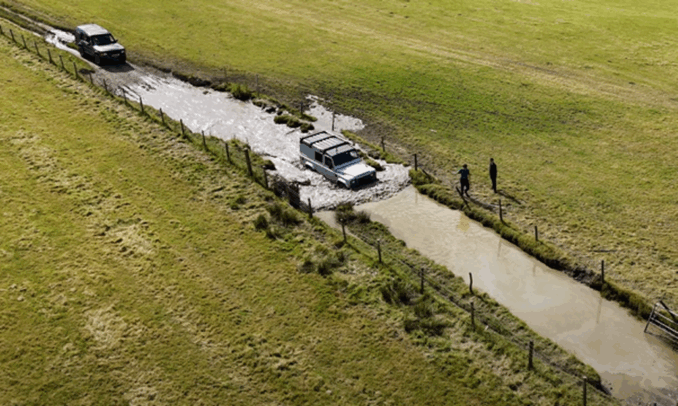
© Cromwell’s Codpiece 2025
The Camps
We have always combined our laning trips with an ‘off grid’ camp. I have set the Landy up to be a mild overlander in that it has a 12v fridge powered by a leisure battery; suitable storage for longer-term camping; and the all important awning for when the weather is poor. It has become routine that I provide and cook the steaks; Brian provides and cooks accompaniments including mac n cheese and roast potatoes; and George provides the beer. Once the tent is up and fire lit one can sit back, de-brief on the day’s antics, exchange banter on the driving performance of each other and talk endlessly about how Land Rover have completely and utterly lost their way.
Thanks for reading. I will leave you with a few romantic photos of various camps.
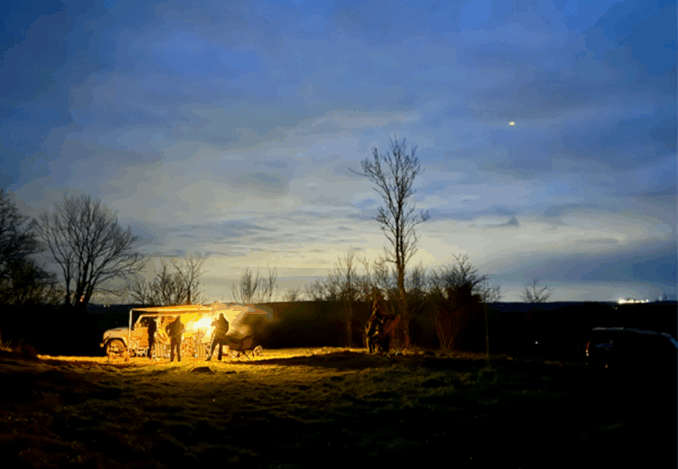
© Cromwell’s Codpiece 2025

© Cromwell’s Codpiece 2025
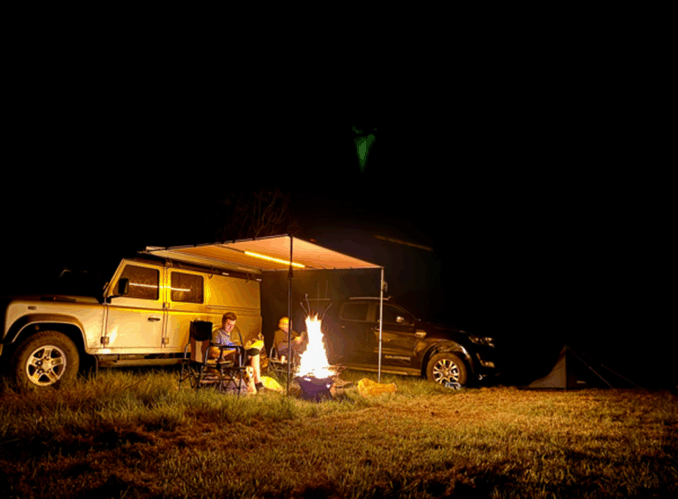
© Cromwell’s Codpiece 2025

© Cromwell’s Codpiece 2025
© Cromwell’s Codpiece 2025



